The Comprehensive Home Care Beds Buying Guide
Janice
Last Update 2 maanden geleden
In the field of healthcare, the choice of a home care bed is a decision of profound importance, transcending the boundaries of mere comfort and practicality. These specialized beds play a pivotal role in ensuring the comfort, safety, and well-being of individuals who require in-home care. To aid individuals, caregivers, and healthcare professionals in making informed decisions, this home care beds buying guide offers a detailed exploration of key considerations and features associated with medical beds. From essential functions to advanced features, and safety standards to customization options, this Comprehensive Home Care Beds Buying Guide aims to provide an extensive overview of the factors that should be taken into account when purchasing hospital beds for home.
Who Can Benefit From Home Care Beds?
Home care beds are designed to cater to a wide range of individuals who require specialized care and assistance within the comfort of their own homes.
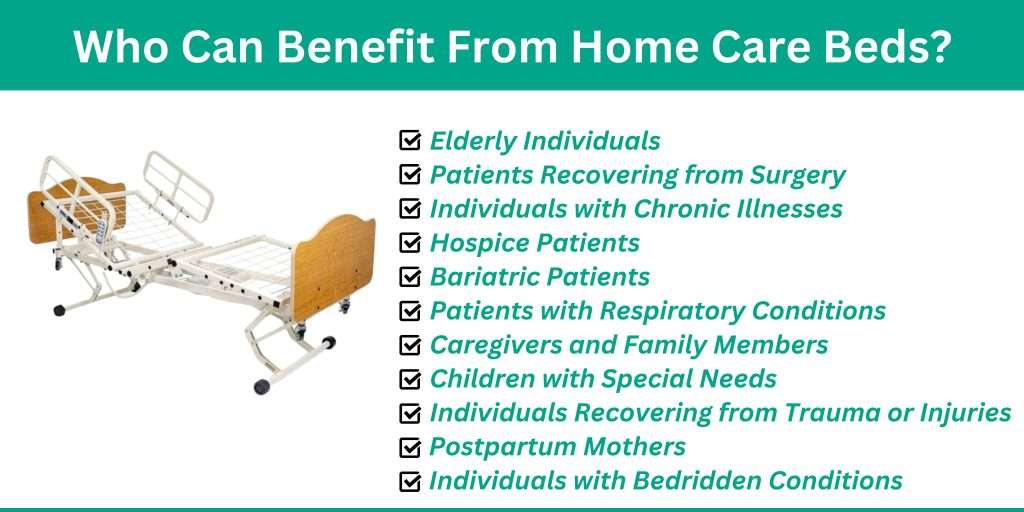
The following groups of people can benefit from home care beds:
ELDERLY INDIVIDUALS - Aging individuals who may have mobility issues, chronic illnesses, or frailty often benefit from home care beds. These beds provide comfort, ease of movement, and safety, making it easier for them to get in and out of bed and prevent falls.
PATIENTS RECOVERING FROM SURGERY - Individuals recuperating from surgical procedures, such as joint replacement or spinal surgery, may require a home care bed to ensure proper positioning, reduce strain on surgical sites, and minimize the risk of complications.
INDIVIDUALS WITH CHRONIC ILLNESSES - People living with chronic conditions like arthritis, multiple sclerosis, or Parkinson’s disease often experience mobility challenges. Home care beds offer adjustable positions that can alleviate discomfort and improve their quality of life.
PATIENTS WITH DISABILITIES - Those with physical disabilities or paralysis often rely on home care beds to enhance their daily living. These beds can assist with positioning, transferring, and maintaining comfort, promoting independence.
HOSPICE PATIENTS - Patients receiving end-of-life care at home may require specialized home care beds to ensure comfort and facilitate caregiving. These beds are designed to provide comfort during the final stages of life.
BARIATRIC PATIENTS - Individuals who are overweight or obese may benefit from bariatric home care beds designed to accommodate higher weight capacities. These beds ensure patient safety and Individuals with respiratory conditions like sleep apnea or chronic obstructive pulmonary disease (COPD) can benefit from home care beds with adjustable head and foot positions that facilitate easier breathing and sleep comfort while reducing the risk of pressure ulcers.
PATIENTS WITH RESPIRATORY CONDITIONS - Individuals with respiratory conditions like sleep apnea or chronic obstructive pulmonary disease (COPD) can benefit from home care beds with adjustable head and foot positions that facilitate easier breathing and sleep.
CAREGIVERS AND FAMILY MEMBERS - Home care beds are also valuable for caregivers and family members. Adjustable features and safety mechanisms make caregiving tasks more manageable, reducing strain and enhancing the quality of care provided.
CHILDREN WITH SPECIAL NEEDS - Children with disabilities or medical conditions may require specialized pediatric home care beds to address their unique needs and ensure their safety and comfort at home.
INDIVIDUALS RECOVERING FROM TRAUMA OR INJURIES - Patients recovering from accidents, trauma, or injuries often require home care beds to support their healing process, prevent complications, and ease the transition to mobility.
POSTPARTUM MOTHERS - Women recovering from childbirth or cesarean sections may find home care beds beneficial for providing comfort, support, and ease of movement during the postpartum period.
INDIVIDUALS WITH BEDRIDDEN CONDITIONS - Those who are bedridden due to various medical conditions or injuries can significantly benefit from home care beds, which offer pressure relief, positioning, and comfort to prevent bedsores and discomfort.
In summary, home care beds are versatile medical devices that cater to a broad spectrum of individuals with varying healthcare needs. They serve to enhance comfort, mobility, and safety, allowing individuals to receive care and support in the familiar environment of their own homes.
What are Home Care Beds?
Home care beds, also known as hospital beds or medical beds, are specialized beds designed for use in a home or residential setting to provide comfort, safety, and convenience for individuals who require medical care or assistance with activities of daily living. These beds are adapted from hospital-grade beds but are tailored for home use, offering a range of features and functionalities to cater to the specific needs of patients and their caregivers. Home care beds are typically more adjustable and versatile than standard household beds, allowing for better patient positioning and care.
Home care beds are used in various healthcare settings, including home care, hospice care, long-term care, and rehabilitation facilities. They play a crucial role in providing comfort, mobility assistance, and medical care for individuals with diverse healthcare needs, such as those recovering from surgery, managing chronic conditions, or receiving end-of-life care. Joerns hospital bed provides the ideal blend of functionality and comfort, promoting better healthcare outcomes. These beds are essential tools for caregivers and healthcare professionals to ensure the well-being and safety of patients in a home-based environment.
Types of Hospital Beds for Home Care
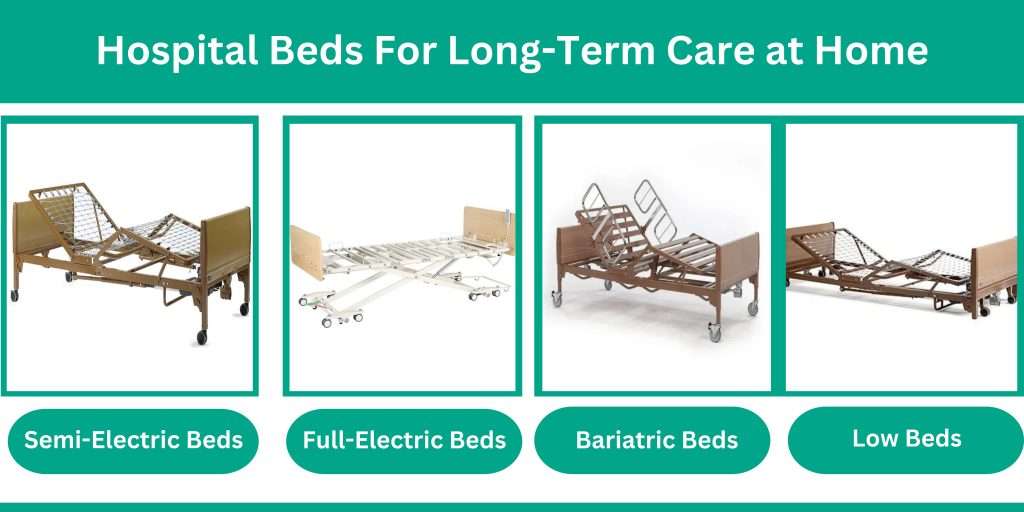
There are several types of hospital beds designed for home care, each offering specific features and functionalities to meet the varying needs of patients and caregivers. Invacare hospital beds are the cornerstone of patient care in healthcare facilities worldwide. These specialized beds are designed to provide comfort, safety, and flexibility for patients during their treatment and recovery.
With features such as adjustable positions, side rails for safety, and advanced monitoring capabilities, hospital beds play a crucial role in enhancing patient well-being and facilitating medical care. Whether in a hospital room, a long-term care facility, or a home care setting, hospital beds for sale are essential tools that prioritize the comfort and recovery of patients while assisting healthcare professionals in delivering the highest quality of care.
Here are some common types of hospital beds for home care:
Semi-Electric Home Care Beds
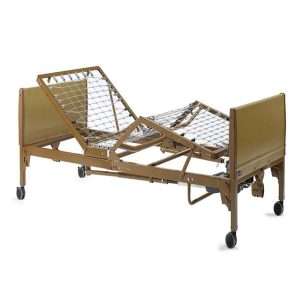
- Semi-electric beds offer partial electric operation, making it easier to adjust the head and foot positions with a remote control.
- Bed height adjustments are typically manual with a crank system.
- These beds are a good compromise between manual and fully electric beds.
Full-Electric Home Care Beds
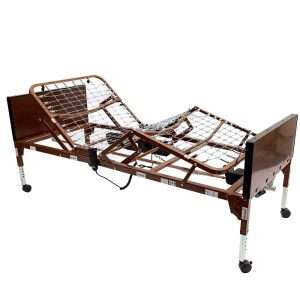
- Full-electric beds are entirely powered by electricity and offer the most convenience for patients and caregivers.
- They allow for easy adjustments of head and foot positions as well as bed height through remote controls.
- ProBasics hospital beds epitomize reliability and comfort in the healthcare industry.
Bariatric Home Care Beds
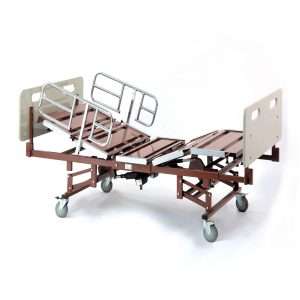
- Bariatric beds are designed to support individuals who have higher weight requirements.
- These beds have a higher weight capacity and wider dimensions to accommodate larger patients comfortably.
- Bariatric home care beds may be semi-electric or full-electric.
Low Hospital Beds
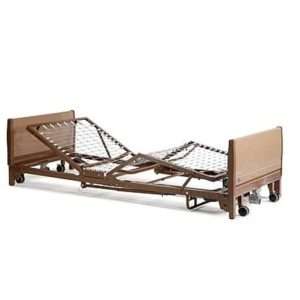
- Low beds are designed with a lower minimum height, making it easier for patients to get in and out of bed safely.
- They are often used for fall prevention, especially for patients at risk of rolling out of bed.
Top Features of Home Care Beds
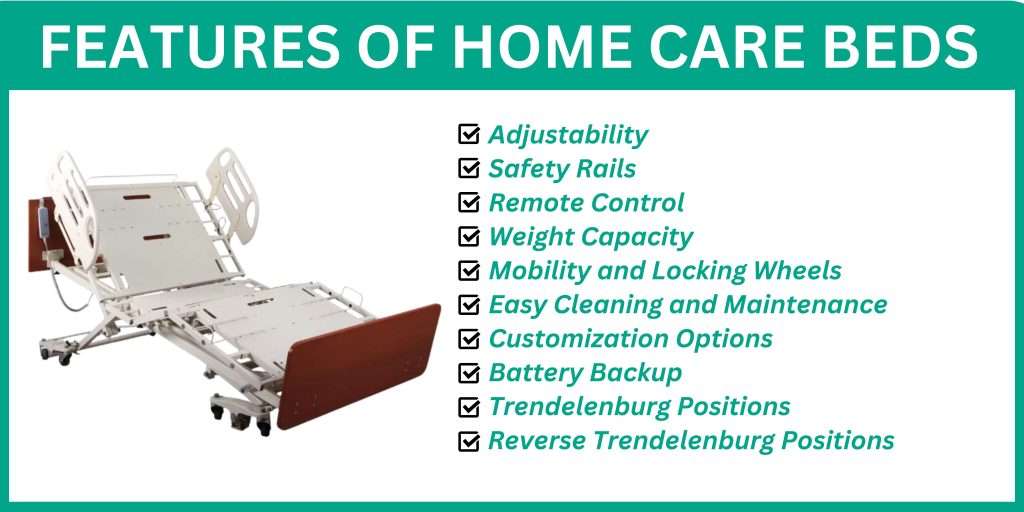
ADJUSTABILITY - Home care beds are often fully or semi-electric, allowing for easy adjustment of the head, foot, and overall bed height. This adjustability aids in achieving comfortable sleeping and sitting positions, as well as facilitating medical procedures and caregiving tasks.
SAFETY RAILS - Many home care beds come equipped with safety rails or side guards that can be raised and lowered. These rails help prevent patients from falling out of bed and provide support when getting in and out of bed.
REMOTE CONTROL - Electric home care beds typically come with a remote control that allows patients or caregivers to adjust the bed’s position with ease. This remote control simplifies the process of changing the bed’s configuration.
MATTRESS OPTIONS - Home care beds can accommodate a variety of specialized mattresses and support surfaces designed to address specific needs such as pressure relief, comfort, and prevention of bedsores.
WEIGHT CAPACITY - These beds are engineered to support varying weight capacities, including bariatric options for individuals who require higher weight-bearing capabilities.
MOBILITY AND LOCKING WHEELS - Some home care beds are equipped with locking wheels to ensure stability when needed and mobility for easier room-to-room transfers when necessary.
EASY CLEANING AND MAINTENANCE - Many home care beds are designed with ease of cleaning and maintenance in mind, with removable and washable components.
CUSTOMIZATION OPTIONS - Home care beds often offer customization options, allowing users to choose bed sizes, finishes, and other features to match their preferences and home décor.
BATTERY BACKUP - Some models include battery backup systems to ensure that the bed remains operational during power outages.
TRENDELENBURG AND REVERSE TRENDELENBURG POSITIONS - Some advanced home care beds offer Trendelenburg and reverse Trendelenburg positions, which can be useful for certain medical conditions.
What to Consider Before Purchasing Home Care Beds
Purchasing home care beds is a significant decision that requires careful consideration to ensure that the chosen bed meets the specific needs of the patient and the caregiver.
Here are several crucial factors to think about before making a purchase:
- Patient Needs and Preferences
Assess the patient’s medical condition, mobility, and comfort requirements. Consider factors such as whether the patient needs assistance with getting in and out of bed, repositioning, or managing pain.
- Bed Type and Configuration
- Bed Dimensions and Weight Capacity
- Adjustability and Positioning
- Safety Features
Evaluate the bed’s safety features, such as side rails, fall prevention mechanisms, and emergency controls. Ensure that the bed minimizes the risk of accidents and injuries.
- Durability and Maintenance
Assess the bed’s build quality and materials to ensure durability and longevity. Inquire about maintenance requirements and the availability of replacement parts.
- Budget Constraints
Determine your budget and explore options within your price range. Keep in mind that while basic models may be more affordable, specialized beds may offer better long-term value for patients with specific needs.
Our Top 5 Fast-Selling Home Care Beds You May Buy

Conclusion of Home Care Beds Buying Guide
In conclusion, the process of selecting an appropriate home care bed is a pivotal decision with far-reaching implications for both patients and caregivers. This home care beds buying guide has sought to empower individuals, caregivers, and healthcare professionals with comprehensive insights into the factors and considerations crucial for making an informed choice. From assessing patient needs to understanding bed types, safety standards, and customization options, this home care beds buying guide has served as a valuable resource for navigating the complexities of home care bed selection.
Recognizing that each patient is unique, this home care beds buying guide underscores the importance of tailoring the choice to individual requirements, ensuring comfort, safety, and enhanced well-being. Ultimately, the judicious application of the knowledge presented herein promises to enhance the quality of care and support delivered within the home care setting, promoting comfort, dignity, and peace of mind for all those involved in the caregiving journey.
At Top Medical Mobility, our comprehensive home care beds buying guide is your trusted companion in making informed decisions when acquiring these specialized beds. We explore critical factors, bed types, advanced features, and safety standards, empowering individuals, caregivers, and healthcare professionals to provide top-notch home care.By addressing the unique requirements of patients and prioritizing safety and functionality, our home care beds buying guide aims to elevate the quality of care and mobility assistance within the home care bed. Trust in our expertise to help you make the best choices in your pursuit of enhanced comfort and well-being
Visit Top Medical Mobility to explore our comprehensive home care beds buying guide, learn about the latest innovations, and discover how our home care beds can elevate your caregiving experience. Join our community and prioritize comfort, safety, and well-being with Top Medical Mobility today!
